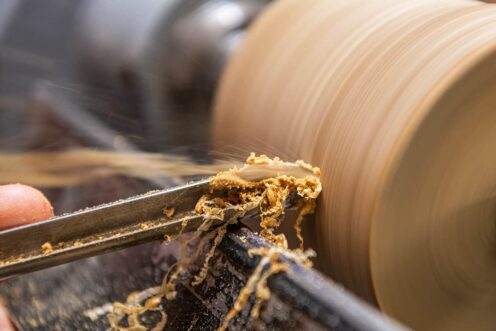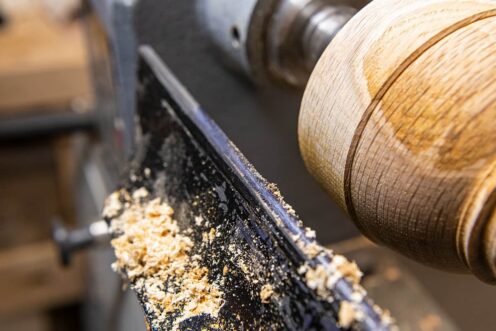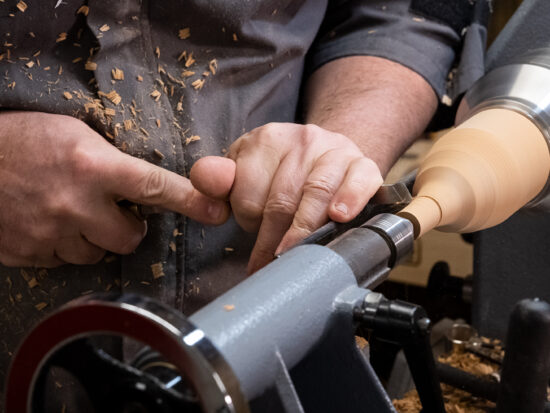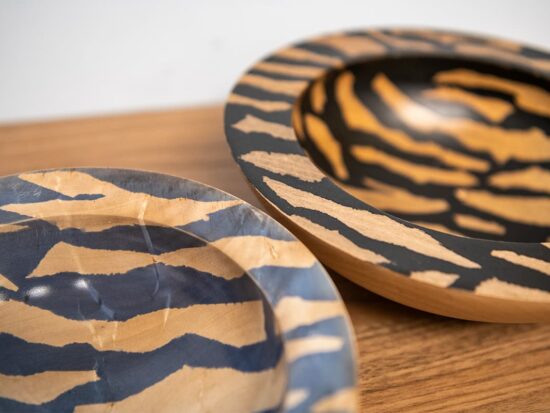Tips on Turning Green Oak

Want to know more about turning green oak? Then you have come to the right place. Here we explore the benefits of turning green oak over seasoned timber and tips to get you started.
What is green oak?
Green oak refers to the state of the timber and means that it is still fresh, meaning it has recently been felled. Oak that has been felled within 18 months can be referred to as green.
As it has not had time to season, the wood is still full of moisture and sap. Watch our video and join Colwin and he explores the many benefits to turning green oak.
Or read on for more information.
Green vs seasoned oak
There are a number of reasons for why you might want to turn green oak.
Sculptural pieces
It is particularly good if you are interested in turning decorative and artistic pieces. Turning pieces as thin as 1-2mm thick means that as the timber naturally dries and begins to season, it can produce cracks and flaws which can then be used to highlight as a feature within the piece.
Quick drying timber
Rough turning your green bowl blanks to an inch thick is one way to dry wood quickly. As the seasoning process can take years, this can speed up the process to a matter of months.
Wet timber is often free or cheap to buy, whereas a seasoned bowl blank can be very expensive, particularly if you use a lot.
It’s better to turn
Green oak is very nice to turn and much easier to turn than dry timber.
Seasoned oak is hard, can be abrasive to turning tools, and is not as pleasurable to turn. Wet timber will peel away easily, but it can create a mess with long, ribbon shavings.
Downsides of turning green oak
One of the downsides to turning green oak, like chestnut and yew, oak has a huge amount of tannic acid, which is very corrosive.
If not cleaned away, it can ruin the bed of your lathe and turn your tools blue. Therefore, you need to be careful when cleaning up after. Use camellia oil to make sure the lathe bed and turning tools are clean.
Clean regularly - even if stepping away from the lathe for a short while. Don’t leave shavings lying on metal surfaces.
Also be careful not to touch your tools, then touch your workpiece and it will turn blue! While this may cause you issues, this could also work to your advantage as a decorative process to help create ageing effects.
Using vinegar and wire wool will turn your timber surface black or deep brown and is a natural way to ebonise the oak.
Turning tips
- To turn green oak ensure your tools are razor sharp and re-sharpen more often, as you will lose your edge quickly.
- Wipe down surface the minute you stop to avoid corrosion
- Take additional safety precautions. Use barrier cream to stop your hands from turning blue.
- Protect your workshop using sheets or tarpaulins. The shavings will fly off making a mess!
- Once the surface starts to dry, you can hand sand when creating more sculptural pieces. Rough turned bowl blanks won’t need sanding, as they will be turned again once fully seasoned.
Try something new
If you haven't tried turning green oak, then why not give it a go? Tried it, then share it! Share your images with us. Tag us in your photos on social media with @axminstertools and show us what you’ve made. Find us on Facebook and Instagram.












